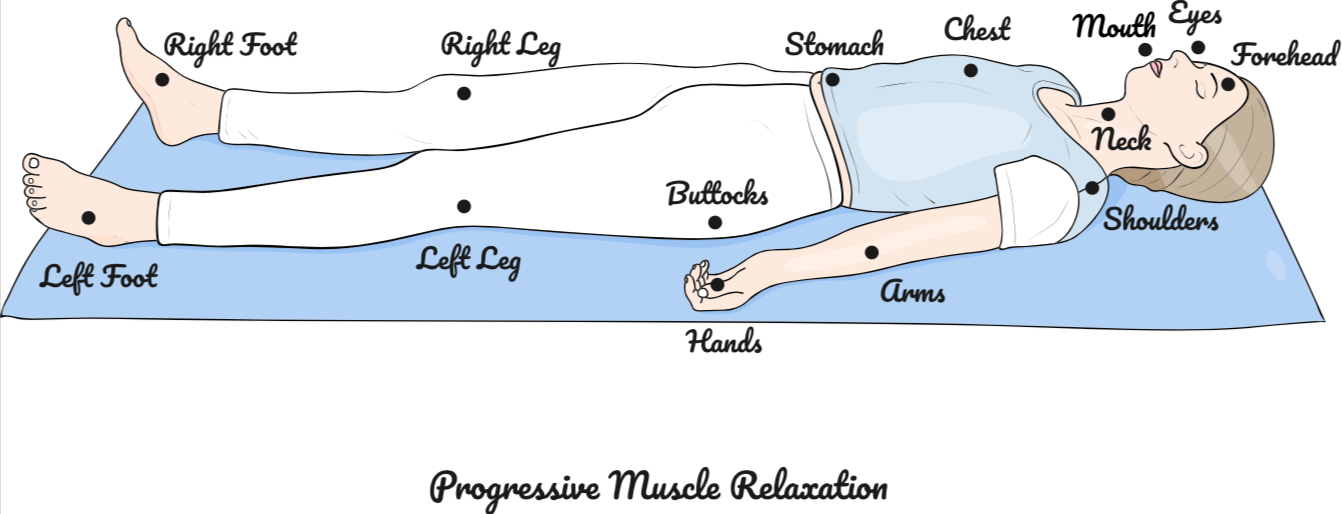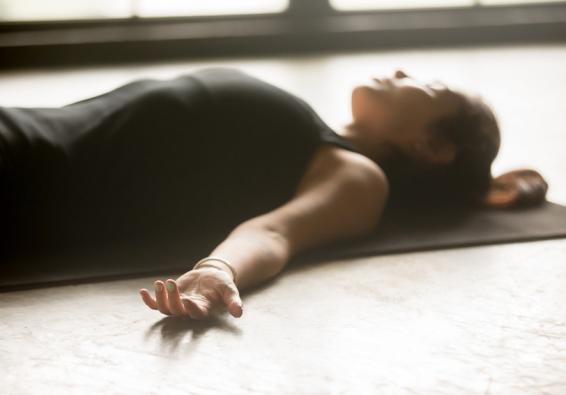Progressive muscle relaxation (PMR) is a stress-management mindfulness technique. PMR can help relieve the physical symptoms of stress and anxiety, such as tight, aching muscles, by systematically tensing and releasing certain muscle groups in your body. Whether your stress comes from a physical condition such as an intense mission or training activity or from mental pressure such as anxiety or fear, your mind and body will react. So, if you relax your mind or your body, the other will soon follow.
This article will teach you how progressive muscle relaxation works with a 10-minute guided video. This will enable you try it out, and inform you on the many benefits and ways you can apply it.
What is progressive muscle relaxation?
PMR is a type of complementary and alternative medicine, a method of treatment that can be used in addition to standard medical interventions. The practice has been in use for nearly a century for a variety of mind-body disorders—from headaches to stress relief. When you practice PMR, you learn to release tension and develop deep relaxation by actively tensing and then relaxing the muscles throughout your body in a specific way.
To begin PMR, sit or lie down in a comfortable position and breathe slowly. Start with your toes and feet, then squeeze the muscles tightly as you inhale. Count to 5, then relax your muscles as you exhale. Repeat 2 more times. Then do the same for all the other muscles in your body, progressing through your legs, stomach, arms, shoulders, and neck. If you prefer, you can also start with the muscle groups at the top of your body and work your way down. The idea is to “progress” either up or down your body. The outcome: You can train your body to relax on command.

How progressive muscle relaxation can help you manage stress and optimize performance
It’s easy to think your responses to stress (such as rapid heartbeat, sweat, and anxiety) are something you want to avoid altogether. But the energy you gain from stress can be a valuable tool to help you perform. Unfortunately, sometimes your stress can go on overdrive and be activated for too long or at too high of an intensity than you need for a specific mission-essential task on the battlefield or at home. For example, if your task is to place an IV into a patient’s vein, but your stress-response system is activated to the level of intensity you would need for combatives, things can go wrong for you and your patient! Therefore, it’s important to have tools to help you have the right amount of energy from stress for the task at hand.
To learn about other stress-management tools to boost your performance, read HPRC’s article your Individual zone of optimal functioning (IZOF): Your stress “sweet spot”!
Progressive muscle relaxation can help you pump the brakes on your stress response when it’s on overdrive, address (and control) the physical symptoms of stress, and improve your performance.
Two specific physical symptoms of stress are muscle tension and shallow breathing. When you practice progressive muscle relaxation, you can consciously tie your breath and muscle relaxation together. And you’ll be better able to release muscle tension on demand by adjusting your breath. To help you reduce stress, PMR has been shown to lower blood pressure, decrease symptoms of anxiety and depression, and increase overall well-being and emotion management.
Give it a try!
Use this video to practice a short, 10-minute progressive muscle relaxation exercise.
How to optimize performance by practicing progressive muscle relaxation
At first, PMR might feel weird or uncomfortable. Like any skill, the benefits come with regular practice. Pick a time when you can practice it each day, for example before bed, at lunch, or when you first wake up. Then try it out for a few weeks and track its impact. You can use HPRC’s “Stress management skills worksheet” below. If PMR works for you, try to find ways to also use it strategically before mission-essential tasks when you notice you might be too revved-up to perform at your best.
How progressive muscle relaxation is used in the military
Service Members are slowly adopting treatments such as PMR. You might wonder if practicing PMR can be effective against the extreme stresses that sometimes come with military service, but there are certainly benefits worth exploring. In fact, more than half of Military Treatment Facilities (MTFs) offer PMR as a treatment option—most commonly for anxiety and stress management, but also for chronic pain and post-traumatic stress.
How to use progressive muscle relaxation at home
Not only can progressive muscle relaxation help you improve your performance, but PMR exercises can also benefit your children. Relaxation techniques can be an important coping strategy for kids to use as they encounter stress or other big emotions. Kids often lean toward using “problem-focused” coping (targeting the external situation around them) rather than “emotion-focused” coping (changing their internal response to the situation). Breathing and relaxation techniques help foster emotion coping, so it can be a good idea to help your kids practice PMR. Consider being creative with your PMR scripts. Instead of just giving instructions, turn them into stories and come up with narratives to help relax each muscle group.
Progressive muscle relaxation is one of many relaxation response techniques that can help you or your loved ones lower stress levels. Learn more about how to make stress good for you with our stress-optimization guide.
If you want to use PMR with your kids, try this progressive muscle relaxation script.
